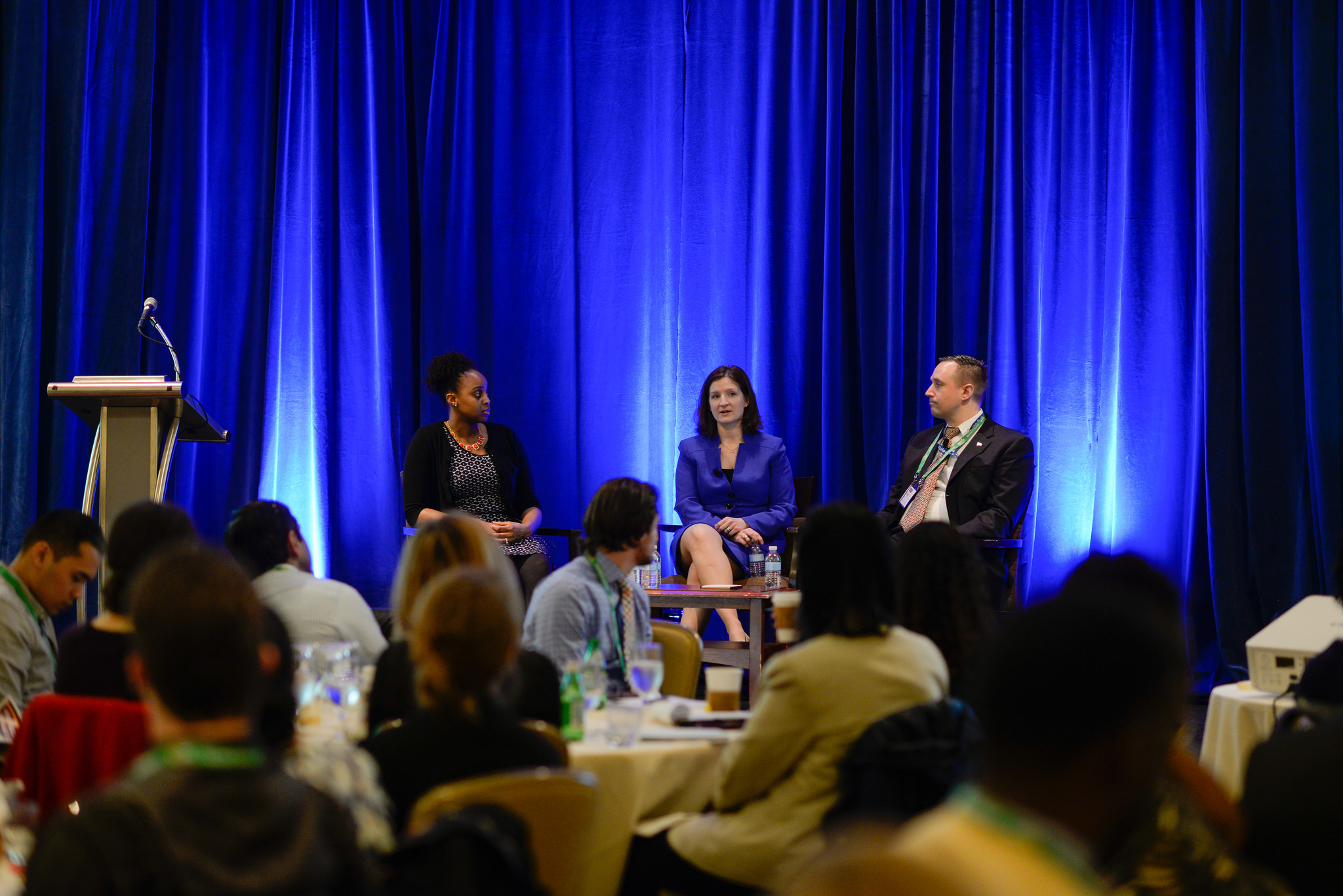Data analytics isn’t about technology — it’s about the people.
That was the main takeaway from a lively roundtable session held at GovLoop’s March 8th event, How to Understand Government Data Analytics. Nicole Blake Johnson, Technology Writer at GovLoop came together with Caryl Brzymialkiewicz, Assistant Inspector General / Chief Data Officer at Department of Health and Human Services, Office of Inspector General, as well as Brian Done, Chief Architect/Senior Strategist at the Department of Homeland Security. The three engaged in a far-ranging discussion about the benefits, the pitfalls, and the best practices surrounding data analytics use in government. Turns out, data analytics in action is often all about saving lives, making lives better, and telling the stories of people — not the actual IT or technology behind it.
Each panelist kicked off the conversation discussion an example of data analytics in action that showcased this fact. Brzymialkiewicz talked about how data analytics had helped expose a doctor in Michigan who was administering incorrect doses of chemotherapy to patients.
When this case came in, the team checked the whistleblower’s lead against different data sets, including claims data, Brzymialkiewicz said. The data corroborated the whistleblower’s claims, but initially it was such an outlier that officials thought something was wrong with the data.
“We talk about two outcomes for this office: It’s really about protecting programs and protecting beneficiaries,” she said. “So I tell that story because, in terms of detecting fraud, using data analytics is a huge mission.”
Done brought up how within cybersecurity and communications in DHS, there’s a huge discussion around the need to share data and perform analytics on — while reconciling those needs with privacy rights of individuals. “We need to talk about how to keep effectively utilize data and keep in mind privacy and civil rights,” he said. “How do we then share that data?”
Blake Johnson highlighted how the state of Indiana was fighting a critical opioid epidemic. Folks there started wondering: what if the state could gather data to visualize heroin use? The Indiana Management and Performance Hub (MPH) worked closely with Indiana’s police forensic laboratories to track and visualize the types of illegal substances that officers are finding on the street, and how often they’re finding them. The most recent data (to November 2015) showed a dramatic rise in heroin submissions to the lab but a steady decline in other opioid submissions, namely prescription drugs.
The fact is, data analytics when done effectively affects real people. The concept can seem abstract, but the effects are concrete.
So how do you deploy and achieve a successful data analytics program in your agency? The panelists shared their tips.
#1: Communicate the need effectively and tell stories
“It’s positive when you can translate what folks are doing not from a technical standpoint necessarily, but giving the “Readers Digest” version to help them understand the story and the value,” said Brzymialkiewicz.
#2: Get leadership buy-in by understanding their priorities and needs
“Find out what really interests leadership,” Blake Johnson said. “What are their pain points? How can data drive those programs? You especially need this if you’re trying to get data from multiple agenices. You need that person to get everybody to play nice and share the data.”
#3: Create an open environment to discuss needs
“Oftentimes in government we have created a closed environment where you suffer consequences for having honest discussions about things data reveals,” noted Done. “We need to have an open environment where nobody is punished for those discussions.” Brzymialkiewicz agreed: “You need remember the phrase, ‘Truth to power,’” she said. “Data might tell stories people don’t want to hear.”
#4: Tie data to mission need
“Figure out the priorities that will truly move the agency forward,” Brzymialkiewicz said. “Have open dialogue with key stakeholders. Roadmaps and 3 or 5-year-plans are a good communication tool to explain where you are and where you’re going.”
#5: People on the ground are still a big asset
In the case of the fraudulent Michigan doctor, Brzymialkiewicz explained that the investigation all started off with a tip from a whistleblower. “It’s all about data plus field intelligence,” she said. “ se the combo of a whistleblower telling a story then using the data to confirm that. You often still need field intelligence and what people are seeing on the ground. Then you can combine that with the data.”
#6: Don’t forget privacy
“Especially with open data directives, you can’t leave privacy behind,” said Done. “It’s still an important consideration and a delicate balance.”
#7: Wear your data geek badge with pride
This advice came from Brzymialkiewicz. “Be a proud data geek,” she said. “Tell your story and help people figure out how they can use data analytics.”
Read more recaps from the GovLoop event here.
 |





Creative government I love u all.